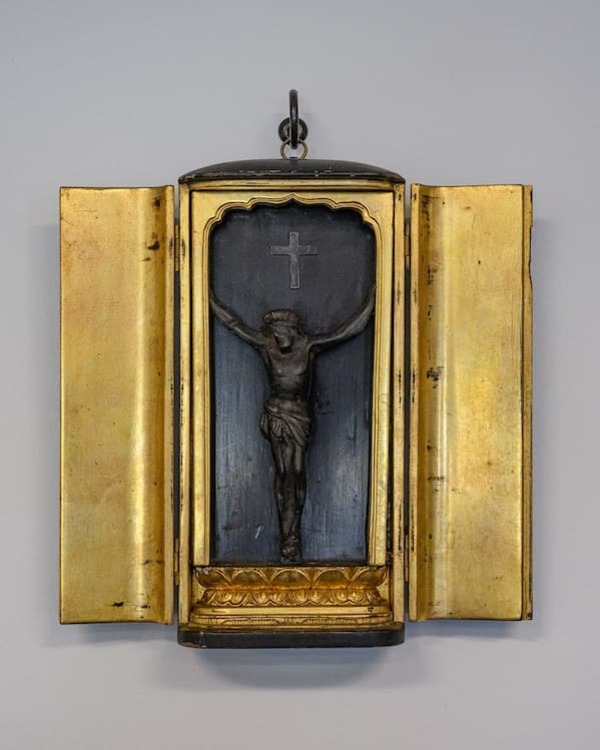Japanese Crucifix
This Japanese crucifix is modeled after crucifixes from the late 16th century when Christianity was introduced to Japan. Crucifixes of that time resembled butsudan—a small wooden box with cabinet doors that enclosed a painting or statue of Buddha. These personal Buddhist altars were commonly found in Japanese homes and are still common today. Japanese crucifixes during the Tokugawa era (1603–1867) were similarly contained within these small shrines and stored within sacred spaces within the home.
Housing crucifixes in this manner was especially important from 1614 to 1873 when Christianity was prohibited in Japan. Tokugawa shoguns perceived Christianity as a foreign threat and attempted to eradicate it by persecuting and killing practicing Christians. Underground Christian families hid religious items by closing the doors of family altars so that they could pass as Buddhist shrines.
Although freedom of religion was introduced to Japan in 1873, during the Meiji Restoration, Christian iconography in Japan continued to be shaped by local religious traditions, particularly due to the lack of contact with the West. The influence of Buddhism on the present crucifix, which was likely produced between 1945 and 1970, can be seen in the lotus petals at Christ’s feet.
